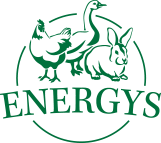Age of the birds
Laying takes place in specific cycles, commercial hybrid layers usually start laying at around 150 days of age, and keep laying for around 11 months, during which time they lay 250 - 280 (300 eggs). The bird then stops laying and moults for 5 - 8 weeks. During the second laying period, the bird lays fewer eggs (a reduction in the number of eggs by up to 20% is stated), but these are larger (by approx. 5-8%).
Commercial layers must be healthy
Each illness or deficiency reduces egg production. Even chicken mites can be a cause of reduced egg production, even significant reduction. Some infectious diseases can stop young layers from laying completely - for instance the infectious bronchitis virus destroys the ovaries of growing pullets. The hens then never start laying, even though they look like healthy layers (commercial layers are usually inoculated).
Feed the layers
It is given must provide them with sufficient nutrients (energy, proteins, vitamins and minerals) for egg production. The most frequent problem is a lack of proteins and minerals - the hen uses around 18 grams of protein and 4 grams of calcium to produce each egg and nutritional efficiencies have a serious impact on production.
Light
Sufficient daylight, optimally 14 to 16 hours, is essential to maintain reproductive functions. The shorter days in autumn and winter affect the hormonal condition of the layers, as well as the amount of feed they eat throughout the shorter period, which means fewer eggs are laid.
Temperature of the environment
The optimum temperature for layers is around 12 to 20 degrees, freezing weather has a negative impact on laying, but temperatures over 30 °C are also not optimal. We can particularly influence the temperature in winter by suitably insulating the coop (the temperature in the coop should never drop below freezing, not even during very cold weather. High summer temperatures can be mitigated by shading the run and also providing the opportunity for a dust bath in dry soil or a dust bath under the trees, which will contribute to the hens’ comfort in very hot weather.

